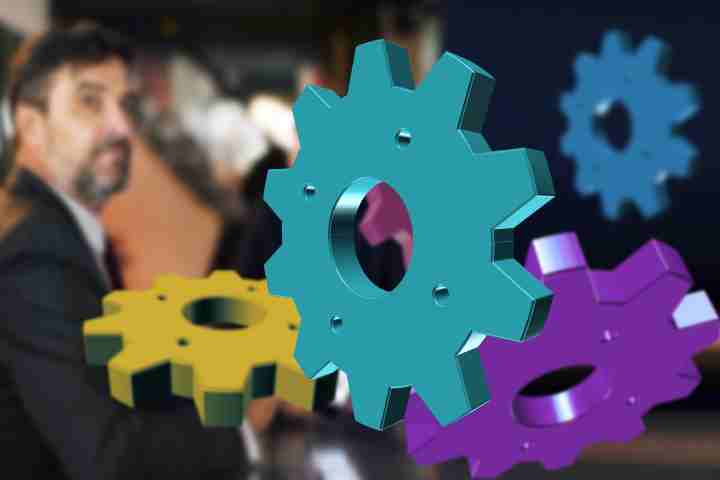Advantages & Disadvantages Of Automation In Production

Automation as a panacea? This is more like a dream than a reality. The coin always has two sides. We show you the advantages and disadvantages of industrial automation.
Table of Contents
The Utopia Of The Intelligent Factory
It sounds fantastic. You produce your products in record time. Your production costs are flying low – your output quantities are skyrocketing. Your customer is enthusiastic and always gets his deliveries on time and in optimal quality. His only problem is that he can’t buy larger quantities from you. And what else do you have to do? You put the raw materials and individual parts in your production hall, lean back and watch as the transportable product comes out at the back. Your automated, networked production systems do the rest.
A picture book story, or: Industry 4.0 through rose-colored glasses. But when we wake up from our little daydreams, reality often looks different. At the same time, this description is no fictitious fairy tale. Let’s take a closer look.
Automation: A Coin With Two Sides
If these so-called “cyber-physical production systems” exist, why are they not the reality for most companies? In medium-sized companies, in particular, production processes are still primarily carried out “classically manually.”
A conflict between theory and practice: Your problems will not suddenly vanish into thin air just because you are declaring the automation of your production. The advantages and disadvantages, pros and cons of automation, should be considered carefully. We want to give you an overview.
Advantages
- increase in productivity
- Ensuring quality standards
- Transparency in production
Disadvantages
- Increased complexity
- Declining flexibility
- High investment costs
Benefits Of Automation
Increase in productivity and cost-effectiveness: Automation completes repetitive motion sequences just faster. Low cycle times and high quantities characterize automated processes. In addition: a machine never sleeps, and a device doesn’t have a weekend. You can easily manufacture 24 hours a day, 7 days a week, on automated systems without burdening your employees with this. Increased productivity leads to increased profitability. This, in turn, leads to increased competitiveness.
Ensuring quality standards: We humans have tons of qualities. We are creative and empathetic. We spin ingenious ideas far away from any logic. And I prefer sound human judgment to cold machine algorithms when it comes to life or death. Doing the same movement 8 hours a day without losing concentration is not one of our talents. Whether we like it or not, the human source of error is natural and sometimes costs companies considerable sums in complaint costs. This is where automation has the edge. But beware: A person is also at work to set up the machine. It will deliver the quality it is designed to provide.
Transparency in production: key figures determine current day-to-day operations. Just-in-time delivery – both from the supplier and to the customer – requires exact data from production planning. Automation delivers. You receive production figures, scrap figures, and Co. in real-time. In connection with the database with your ERP system, key figures are determined, conclusions are drawn, and actions are derived. In high-end systems, you don’t have to perform the derived actions yourself. The networked machines take care of themselves.
Disadvantages of Automation
Increased complexity through networked systems: You can think of the interaction of all the components in your production system as a multitude of cogs that mesh to function as a whole. What happens when two teeth don’t fit properly? Or if a tooth breaks off? You will quickly notice the fault – at the latest, when your machine is at a standstill. The cause, on the other hand, is often found less quickly and eliminated even less rapidly. Complex production systems are beautiful as long as they run smoothly. However, the more opaque the programming and networking of your machines, the more difficult it is to eliminate faults. Automations designed for freedom from maintenance and high system availability and integrated remote maintenance modules can help here.
Declining flexibility: It’s the classic duel: flexibility and various variants vs. productivity and quantity. In principle, automation thrives on the highest possible output quantity since this is where the most excellent efficiency can be achieved. In return, you give up a certain degree of flexibility in your production. The problem: More and more customers are demanding this flexibility. The trend towards individualizing products up to batch size 1 is progressing. A development that is also causing the players in the automation industry to sleep restlessly. Good for you because more and more solutions in sensor technology, cross-product robotics, or modular building block systems are emerging from this drive.
High investment costs: The main reason many medium-sized companies are not yet members of the “Industry 4.0” scene club is the high entrance fee. The risk of a bad investment is classified as too high. Budget? Usually small. The Covid-19 pandemic? It doesn’t make things any easier. An economical approach to automation is, therefore, elementary for you.
Conclusion: Individual Solutions Are Needed!
The fact is: In the long run, a process optimized through automation should save you more costs than you initially invested in it. When will you achieve the desired ROI (return on investment)? This can usually only be said after a comprehensive analysis. But we can tell you: The industry recognizes your challenges. The spectrum of automation solutions ranges from “all-inclusive” to “very affordable.” So it’s ideal for getting through the entrance even on a small budget.
It is like it is. If you love the rose, you must also put up with its thorns. And in the same way, the advantages of automation will always have disadvantages to a certain extent. So try to maximize the benefits and minimize the downsides. You will succeed if you closely examine your processes, recognize potential, and ultimately work out the best individual solution for you. It may take a lot of effort and brainpower initially, but you’ll thank yourself in the end.
